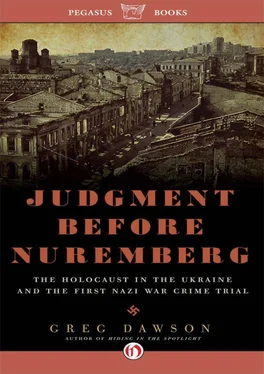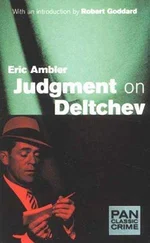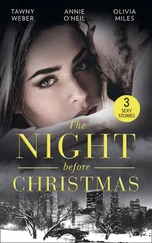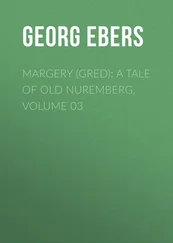My mother’s story is more than testimony to the courage and selflessness of the Bogancha family. In it we see encapsulated the warring instincts of cowardice, heroism, shame, nobility, bigotry, and enlightenment competing for Ukraine’s soul in that terrible time. In her case, the better angels prevailed. She was turned away from two homes, but they were outnumbered by those who sheltered and embraced her: the house on the road to Kharkov, the people on Katsarskaya who brought Frina to her, the farmers who secreted them out of town, the family on the way to Lubotin that opened its door to two fugitive Jews. Even those who turned her away on Katsarskaya did not betray Zhanna, a fact worth noting because there were some who would have—like those who informed on the Arshansky family when the Germans first arrived in Kharkov and were systematically hunting Jews.
The heroism of the Boganchas and the legion of anonymous guardians is heightened by the price they would have paid if discovered. “In Eastern Europe, the Germans executed not only the people who sheltered Jews, but their entire family as well,” says the official Web site for Yad Vashem. “Notices warning the population against helping the Jews were posted everywhere. Generally speaking, punishment was less severe in Western Europe, although there too some of the Righteous Among the Nations were incarcerated in camps and killed.”
Yitzhak Arad in The Holocaust in the Soviet Union says the exact number of would-be Righteous executed by the Nazis is unknown, “but it is feasible to assume that there were many hundreds of them.” He provides numerous examples of the Nazis’ relentless pursuit and murder of rescuers. They were equal-opportunity killers, showing no mercy to noncombatants. “In the Uvarovo district of the Moscow region, the Germans bayoneted a Jewish woman and her small son and shot the mother and daughter who sheltered them,” he writes. A journalist in Kharkov was murdered for sheltering an eleven-year-old girl. The litany goes on and on.
Antonina Bogancha, Nicolai’s widow, still lives in the same house on Katsarskaya Street where Nicolai’s family sheltered Zhanna and Frina. When I visited in December 2010, Antonina showed me the hiding place under the floor—a hole approximately six by six with dirt walls and shelves that now hold preserved vegetables and fruit. This is where the girls would hide if the Nazis came to the door, she said. When I returned home, I asked my mother about the hiding place. She had never seen it. The Germans never came to the door, she said—further testimony to the unshakable allegiance of her Gentile countrymen—“my Righteous.”
Most of those who helped my mother—“my Righteous”—are gone and forgotten. Their names—unknown even to those they saved—will never be added to the list of Righteous Among the Nations. My mother’s thoughts moments after escaping the death march to Drobitsky Yar stand as their requiem.
I could feel the eyes and good wishes of many souls on their last march. It was like they were holding me up in the air above the danger, so I would not be harmed. I felt their passion and knew it would never die. Our hearts were connected.
In 2006, when I visited Ukraine for the first time to do research for Hiding in the Spotlight, the most startling double-take moment was finding my still-vibrant mother’s name etched on a wall memorializing the 16,000 Jews executed at Drobitsky Yar. Seeing her and her sister listed among the dead was a surreal jolt—a vision of a near-miss epitaph for me, my brother, and our four children, as well as our Aunt Frina’s children and grandchildren.
And yet, five years later it’s a different moment from that visit, less dramatic at first glance, that I find myself replaying over and over: I turn a street corner, look up, and see on the side of a building in Russian, “48 Katsarskaya”—my mother’s address. At Drobitsky Yar, where her parents and grandparents are buried but she never set foot, I could see my mother’s name but could not feel her presence.
On the tree-lined sidewalk outside 48 Katsarskaya, it felt like time had collapsed and she was standing there with me, thirteen and carefree again, returning home after a lesson with Professor Luntz, her beloved teacher at the Kharkov Music Conservatory. It had been sixty-five years since the Arshanskys—a candy maker, his wife, and their two girls—were routed from their apartment by Nazis. But something of them lived on, still seemed to possess this space. I recalled what my mother said about her father’s violin, taken by a German who looted their home.
He took the violin, which was like “a member of the family,” she said. “But he could not take its vibrations that came from our existence. The vibrations would remain, without the body.”
And so it was with the apartment at 48 Katsarskaya. I sensed emanations from within, and felt a need to see inside my ancestral Ukrainian home. I wondered if the piano my mother learned on—a Bechstein with a mirrored music stand her father ordered from Germany—was still there. The tall windows facing the street were covered by sheer curtains which beckoned… and repelled. I didn’t knock on the door that day or on a return visit four years later. It was not just reluctance to invade a stranger’s privacy that stopped me. I feared the apartment door could open a Pandora’s Box of historical wounds and recrimination. The vibrations remained.
Rumbling west to east across Ukraine in 1941, the Wehrmacht was a threshing machine separating Jews from their homes and possessions, discarding the useless human husks in giant graves and distributing the harvest to non-Jewish Ukrainians and ethnic Germans. Some of the booty ended up in the hands of local authorities. Gold and silver objects, and currency (rubles), generally were seized and sent to Berlin. Here is a typical Einsatzgruppe report on the harvest from one area in central Ukraine:
“Kiev… Gold and valuables, linen, and clothing were secured. Part of it was given to the NSV (Nazi Welfare) for the ethnic Germans, and part to the city administration for distribution among the needy population. Zhitomir… About 25–30 tons of linen, clothing, shoes, dishes, etc., that had been confiscated in action were handed over to the officials of the NSV for distribution.”
The Nazi “philanthropy” was not always so systematic and controlled. Looting often occurred in the frenzy of Jews being led to slaughter, as described in this scene at Berdichev where 12,000 Jews were murdered on September 14–15, 1941.
“Policemen, members of their families, and the mistresses of German soldiers rushed to loot the vacant apartments. Before the eyes of the living dead, the looters carried off scarves, pillows, feather mattresses. Some walked past the guards and took scarves and knitted woolen sweaters from women and girls who were awaiting their death.”
I am thinking of my grandfather’s gold watch, furtively slipped to a young Ukrainian collaborator in barter for my mother’s life on the road to Drobitsky Yar: does it tell time today in the pocket of the collaborator’s grandson? Did the old man tell the boy how time stood still in the moment he took the watch from my grandfather? I am thinking of the Bechstein piano with the mirrored music stand on which my mother learned to play, and my grandfather’s beloved violin. Were they plundered and put on trains to Germany for use in beer gardens and the private homes of Nazi leaders—or did they pass into the hands of other Ukrainian prodigies?
The most prized of all the plunder were apartments left behind by Jews. “Thousands of apartments and their contents remained vacant after the deportation and murder of their Jewish owners,” wrote Yitzhak Arad. “Some apartments were used to accommodate German administration staff and military personnel; some were requisitioned by the police and local administration and their associates, and some were invaded by local inhabitants.” [1] Arad, The Holocaust in the Soviet Union , 407.
Читать дальше












